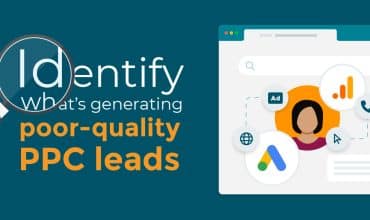First-party cookies: The new recipe for digital marketers
You’ve probably heard that third party cookies are soon to be outlawed by Google on its Chrome browser – by 2024, to be exact.
Safari, Firefox, and Microsoft’s Edge have already ended their support for third-party cookies. But let’s face it, Chrome’s dominance in the browser market means this will be the final nail in the coffin for this particular flavour of cookie.
Tell me – what’s in a cookie?
I’m not tapping up McVities for its secret recipes here. In order to understand what the cookie ban means for digital marketers, you need to know how the digital marketing variety works.
There are essentially two flavours of website cookie: first-party and third-party.
- First-party cookies are created by the domain you’re on. These cookies are most commonly used to identify users between different pages, store chosen preferences and save things like shopping carts on e-commerce websites.
- Third-party cookies are cookies that are created by a different domain than the one you’re on. They are the basis for cross-site tracking of web visitors – for example, for retargeted advertising on social media.
As marketers, we know that transparency, choice and control over data usage are things on which the general public remains vocal. And with the introduction of privacy laws such as the GDPR, third-party was always going to be the variety of cookie that crumbled first.
Oh great, I’ll just cancel all my ad campaigns now, then
Well, not quite. As marketers, we’ve become very reliant on third-party cookies. But don’t forget: first-party data is the information you collect straight from your customers or your clients’ customers. You or your client owns that data (not Google or Facebook) and you’re free to use it (lawfully, of course) without penalty.
In fact, first-party data gives you the most accurate and reliable information about how customers are interacting with your business. With first-party cookies, you can extract data such as website and e-newsletter statistics, buying histories, phone call and web chat interactions, and more.
Can I just use first-party data, then?
In a word, yes. As RTB House writes in their article about a cookie-less world, the future of ad targeting will be all about creating user groups from first-party cookie data, gathering together web visitors with similar characteristics to drive ad targeting.
Ads can then be personalised to a very specific group of users with similar interests and needs, as opposed to individuals – thus removing the privacy issues surrounding the way third-party cookies operate.
The good news is that digital advertising isn’t done for. But the demise of third-party cookies does present some challenges for digital marketers. Now, more than ever, being able to track a customer’s buying journey across multiple channels and platforms will be key to maintaining advertising supremacy.
What can Mediahawk do to help?
I’m glad you asked. Because there are many ways marketers can lean on a call tracking and marketing attribution tool like Mediahawk to help them stay on top of their digital advertising game when third-party cookies are no longer an option.
Straight off the bat, speech analytics will be your best friend. You can use it to create highly-targeted audience segments based on keywords used, voice tags and more.
Mediahawk helps you create remarketing campaigns based entirely on what customers say during phone calls. For example, if someone calls a car dealer to enquire about buying a used car:
- The call is logged and categorised by Mediahawk’s speech recognition software
- The category information is passed to Google Analytics (once you’ve set up a custom dimension)
- Google Analytics puts that visitor into an audience segment related to their particular interest or need
The caller can then be served highly relevant retargeted advertising around used cars they may be interested in.
You can see how visitors navigate your website, getting an in-depth look at the touchpoints they prefer and the pages they commonly visit.
It means you can track their entire journey through the website, including return visits, the channels they use, and any actions taken on specific pages – such as content downloads, live chats, enquiry form entries and phone calls).
All of this can be used to tailor your paid ad messaging and timing, or to help you develop a healthy SEO strategy.
What’s more, by bringing together all of your first-party data – from call tracking insights to CRM data – you’ll be able to build a much more unified customer experience and pinpoint new opportunities to drive revenue.
Conclusion
It’s safe to say the demise of third-party cookies will shake up our industry. But it really is a change for the better. The people you market to demand transparency, choice and control when it comes to their personal data. And no-one benefits while distrust in digital marketing tactics and personal data usage continues to grow. It only serves to make marketers’ jobs harder as they battle negative perceptions.
With third-party cookies out of the equation, it means we can refocus our attention on the most important part of our work: the customer. Prioritising their needs and truly understanding their buying journeys will be key. Then building ever-more relevant and engaging experiences around useful, compelling content will drive campaign effectiveness.
Never before has it been more important to ‘know your customer’.
This article was first published in December 2021, and updated in July 2023.

Book a free, no-obligation demo of Mediahawk. We’ll show you how to get maximum value from your first-party data.



